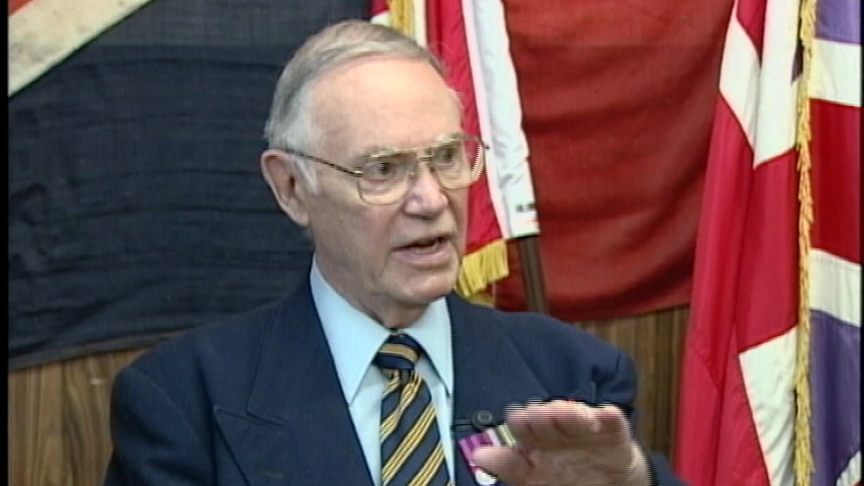Moved To Stanley Prison
Heroes Remember
Moved To Stanley Prison
The two of us were next to each, next, or in cells adjoining and
two were in the opposite side of the jail house in cells that
were next to each other but upstairs, and fortunately, we all
knew the Morse Code. So we made a method of talking to each
other by means, the one next to me, I would do it on the wall
and they had a trap in the door leading into the cell. And the
ones across the way, Captain Ford and Flight Lieutenant Gray, I
was able to, we were able to make movements, movements with our
fingers which sort of indicated dots and dashes which are the
Morse Code.
Interviewer: Were, in fact, you men discovered by the Japanese
communicating in that fashion?
Yes we were.
Interviewer: What, what happened to you when you were found
signalling?
Well, we, we were given another beating, as a matter of fact,
when we were found signalling and told not to do it again sort
of thing. But we wised up to the fact that we had to watch, as
long as that little trap door was open, we had to watch very
closely to see where the attendants, the prison attendants were
before we did any signalling, but we, we kept it up.
Interviewer: After that beating that you received when they
discovered that you were communicating in that fashion, a few
days later, did they take you down to the prison office?
Yes.
Interviewer: What was the purpose of that?
The general purpose was to tell us to behave in accordance with
prison requirements or we would be, we'd receive punishment.
Interviewer: Were you asked or forced to sign a document?
I'm sorry. Again, that's where we were forced to sign a document
also and we had no, no idea really what the document contained
because it was all in Japanese language, but we were forced to
sign the document, yes.
Related Videos
- Date modified:




